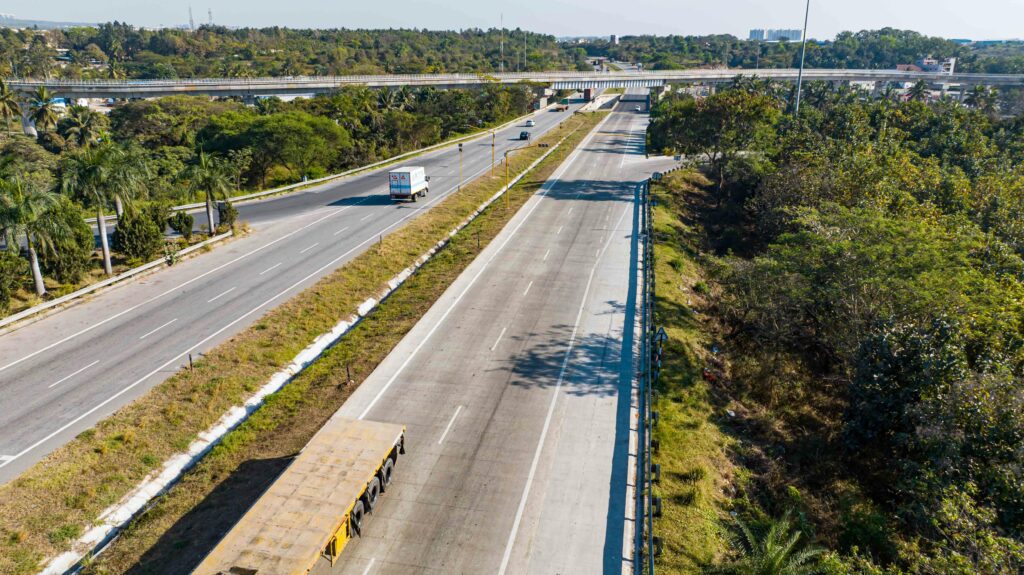On March 1, 2025, North Carolina’s vital transportation artery, Interstate 40, reopened after an extended closure following the severe impacts of Storm Helene. This reopening not only restored a key route for commuters and freight but also highlighted the state’s commitment to rapid response, infrastructure resilience, and community safety. In this article, we take a deep dive into the events that led to the closure, the extensive repair and upgrade efforts, and the measures being implemented to safeguard the roadway against future challenges. We also address some of the most frequently asked questions regarding the incident and recovery efforts.

Background and Incident Overview
Storm Helene swept through parts of North Carolina with unprecedented force, bringing torrential rains, high winds, and sudden flooding that severely compromised sections of I‑40. The storm’s impact was felt across multiple counties, with significant structural damage including:
- Flood Damage and Erosion: Rapid flooding led to undermined road foundations and eroded embankments, necessitating immediate closure to ensure public safety.
- Structural Compromise: Key overpasses and bridges along the corridor sustained damage from high winds and water pressure, prompting thorough inspections and repairs.
- Traffic Disruptions: As one of the busiest east–west highways, the closure forced thousands of daily commuters and commercial vehicles to seek alternative routes, intensifying pressure on local road networks.
Officials described the incident as one of the most challenging events in recent memory, with emergency services and state agencies mobilizing quickly to assess the damage and initiate repair protocols.
Immediate Response and Restoration Efforts
In the wake of the storm, a coordinated emergency response was launched:
- Rapid Assessments: Teams of engineers and safety inspectors were deployed to conduct swift evaluations of the affected roadway sections, bridges, and drainage systems.
- 24/7 Repair Operations: Repair crews worked around the clock to stabilize compromised structures. Temporary fixes such as reinforcing guardrails and shoring up vulnerable segments were implemented to secure the highway.
- Collaboration Across Agencies: Local, state, and federal agencies coordinated efforts, with funding allocated from emergency relief reserves. This collaboration ensured that both immediate safety concerns and longer-term infrastructure challenges were addressed.
- Community Outreach: Public service announcements and real-time updates were provided to motorists via social media, local news outlets, and highway message boards, keeping the public informed about detours and reopening timelines.
These prompt actions not only prevented further accidents during the repair period but also built a foundation for comprehensive infrastructure improvements.

Innovations and Infrastructure Upgrades
While the initial focus was on rapid restoration, engineers and planners saw an opportunity to upgrade I‑40’s resilience for the future. Beyond the essential repairs, several innovative measures were implemented:
- Enhanced Drainage Systems: New, high-capacity drainage channels were constructed along critical sections of the highway to quickly divert excess water during heavy rains, reducing the risk of future flooding.
- Structural Reinforcements: Key bridges and overpasses received upgrades that included reinforced supports and the integration of advanced materials designed to withstand high wind loads and water pressures.
- Smart Infrastructure Technologies: Sensors and monitoring systems have been installed along vulnerable segments to provide real-time data on structural integrity and weather conditions. This early-warning technology enables preemptive action if similar conditions arise.
- Improved Signage and Emergency Areas: Updated road signs, additional emergency pull-off areas, and improved lighting were added to enhance driver safety and facilitate rapid response in case of emergencies.
These forward-thinking upgrades are expected to extend the lifespan of the highway and reduce the impact of extreme weather events in the years to come.
Impact on Commuters, Local Businesses, and the Environment
The closure of I‑40 during and immediately after Storm Helene had far-reaching effects:
- Commuter Disruptions: Daily commuters faced significant delays and longer travel times, with many rerouting through secondary roads. The state provided alternative route information and increased traffic patrols to manage congestion.
- Economic Considerations: Local businesses experienced mixed impacts—while some sectors suffered from reduced customer traffic, others such as logistics and supply chain services saw heightened demand once repairs began. The reopening of I‑40 has already begun to stimulate economic recovery in affected areas.
- Environmental Recovery Efforts: Alongside infrastructure repairs, environmental teams worked to restore riverbanks and nearby habitats affected by the storm’s flooding. Replanting native vegetation and installing erosion control measures have been prioritized to protect both the environment and the roadway.
- Community Resilience: Local communities rallied together, with volunteer groups assisting with cleanup efforts and providing support to families impacted by the disruptions. The collaborative spirit underscored the region’s determination to rebuild stronger than before.
Future Preparedness and Long-Term Monitoring
In light of Storm Helene’s devastation, state authorities are reexamining emergency preparedness and infrastructure management protocols:
- Regular Inspections and Upgrades: The state has committed to more frequent inspections of major highways and bridges, ensuring that vulnerabilities are identified and addressed proactively.
- Investment in Weather Forecasting: Enhanced weather prediction systems are being integrated with highway management software to alert authorities about potential threats well in advance.
- Community and Stakeholder Engagement: Ongoing discussions with local businesses, community groups, and engineering experts are shaping future plans for resilient transportation networks. These collaborative efforts aim to balance economic growth with safety and sustainability.
By embracing these measures, North Carolina aims not only to prevent future disruptions but also to set a benchmark for infrastructure resilience across the nation.

Frequently Asked Questions (FAQs)
1. What caused the closure of I‑40?
The highway was closed due to extensive damage from Storm Helene, which brought severe flooding, high winds, and structural impacts to critical sections of the roadway.
2. How long was I‑40 closed, and what were the major challenges during that time?
I‑40 was closed for several days while emergency response teams assessed damage and conducted essential repairs. The primary challenges included water damage to road foundations, erosion of embankments, and compromised bridges and overpasses.
3. What improvements have been made during the repair process?
In addition to standard repairs, the project included installing enhanced drainage systems, reinforcing key structures with advanced materials, integrating real-time monitoring sensors, and upgrading signage and emergency pull-off areas to improve safety.
4. How will these upgrades benefit future commuters?
The new measures are designed to better withstand severe weather conditions, provide early warnings through smart sensors, and reduce the likelihood of extended closures. This means a more reliable and safer driving experience for daily commuters and freight operators alike.
5. Were local communities and businesses affected by the closure, and how are they recovering?
Yes, the closure disrupted daily commutes and local commerce, but community resilience efforts, improved traffic management on alternative routes, and rapid repair operations have helped mitigate the economic impact. Recovery initiatives continue to support local businesses and residents.
6. What should drivers do if they experience issues on I‑40 in the future?
Drivers are advised to stay informed by following local traffic updates, use alternative routes when necessary, and report any concerns or hazards to local highway patrol services. Updated signage and emergency communication systems are in place to assist motorists during any unforeseen events.
7. How is the state planning to prevent similar incidents in the future?
North Carolina is investing in more frequent inspections, integrating advanced weather forecasting and real-time monitoring technologies, and engaging with community stakeholders to continuously improve the resilience of its infrastructure.
The reopening of I‑40 not only marks the end of a challenging period but also sets the stage for a more resilient future. By leveraging new technologies, innovative engineering solutions, and robust community collaboration, North Carolina is taking decisive steps to ensure that its transportation network remains safe, efficient, and prepared for whatever challenges lie ahead.
Sources CNN


